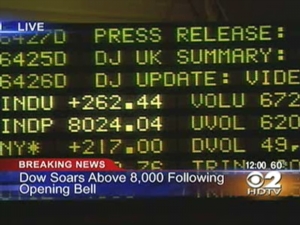Ed Grier has one of the busiest jobs in America. He ensures day-to-day business operations at the world’s first and most iconic theme park run smoothly. We are speaking of Disneyland. “It’s multi-faceted, very complex, and it never stops,” he explains to Business Management’s Ben Thompson.
It is his first week in Anaheim, and Ed Grier is doing the usual rounds in the park – speaking with staff, meeting and greeting guests, and generally getting acclimated to how things operate. Grier is getting a good feel of the place. Only on the job a couple of days, he has just flown in from Disney’s Tokyo resort to take on the role of President at the California attraction. While the jetlag has just recently disappeared, having a visible presence in the park is vital to his new role, and with Disney, interaction with staff and guests is expected on a daily basis for senior management. “Hello Mr Grier,” beams the little old lady in front of him. “Welcome to Southern California.”
Remembering the incident, he grins. “She was so knowledgeable about the park, about the history of the place, about current developments,” he recalls. “I, on the other hand, was just amazed that anyone would even know who I was, let alone recognize me amongst all the thousands of other people there in the park and after only a few days in the role.” In the land of the mouse, it’s clear that the big cheese has an extremely high profile.

There was no need to be so surprised. This is the number one theme park destination in the western United States. The second most popular in the world. The Disneyland Resort contributes over $3.6 billion in third-party annual economic impact to Southern California and supports around 65,700 jobs. Spurring decades of development in Anaheim, Disney has been the catalyst for its transformation from what one local resident describes as “just a town on the way to the beach” into a tourist destination unparalleled by many much larger. “Tourism is a significant business in California,” explains Executive Director of the California Travel and Tourism Commission, Caroline Beteta. “In addition to representing California’s reputation for fun and one-of-a-kind experiences, the Disneyland Resort also creates tens of thousands of jobs and generates billions of dollars for our economy.”
It is true that most of the gains have been related to tourism and sports, but it is likely that the profile Disney gave Anaheim helped in attracted many other businesses as well. It is absolutely no wonder that the arrival of a new face to the Disneyland big seat is big news for Anaheim residents. The resort’s location has proved invaluable to the local area’s economy. It brings in almost 15 million visitors per year, who generate approximately $225 million in taxes for Southern California.
The business of fun
“The Disneyland Resort is a vital component of California’s nearly $80 billion tourism market,” explains Director of the Center for Entertainment and Tourism at California State University, Fullerton, Cynthia King. “There aren’t many other players that create the kind of resort atmosphere they do.”
It is a massive operational challenge to manage the 430-acre site. The area is the home of two theme parks, three hotels and a shopping, dining and entertainment district known as Downtown Disney. Additionally, the park also has its own administrative center monorail. “It’s analogous to running a small city – and not so small of a city when you think about what happens here,” laughs Grier. “It operates 24 hours a day, and we have over 20,000 cast members that work at the resort. Add in the thousands of visitors that come through our gates every day and it makes the day-to-day business operations very complex.”
Grier is a proud 25-year Disney veteran and has run business operations on three continents. He has been in this role in Anaheim just over two years. His prior responsibilities are various, and surely contributed to his preparedness for his current role. They included a stint at Disneyland Paris where he was a component of a marketing team assigned to increase awareness of the resort throughout Europe, and most recently a period of time in charge of Walt Disney Attractions Japan. This is where he ran the business operations for the Tokyo Disney Resort. It’s been a long journey since he joined the company in 1981 as an auditor at the Florida location. One thing Grier will hold fast to, however, is that all of his previous roles have provided important lessons in what it takes to run a multimillion-dollar theme park.

“It’s maybe been an unusual route to the top, but I think each one of those experiences has really prepared me for this job because I need to have a huge grasp of all those different disciplines,” he explains. “A grounding in finance is really helpful; understanding business operations is essential to running the resort; and a knowledge of the marketing aspects of what we do here is hugely important, too. Most importantly, though, you need to have a sense of fun.”
Fun is certainly not something your average person would associate with an accountant, one now in charge of all business operations, but the combination of imagination with a results-oriented business goal has been vital to Disney’s success decade over decade, and Grier is the embodiment of this ethos. In order to maintain that sense of magic that Disneyland is famous for it takes hard work in addition to inspiration. “We have a tremendous heritage here, but at the same time we always need to be looking forward to the future,” he explains. “So while we try to stay very consistent with what we deliver to our guests, over time the park evolves and I think that’s one of the things we really focus on – how to evolve the parks and make sure they’re relevant to our guests today and tomorrow.”
Harnessing creativity
Of course, being able to draw upon the huge well of creative talent across the Disney brand is a tremendous asset in this regard. “We may take a hit movie, for example, and make a great stage show or attraction out of it. Disney’s all about telling stories, so if we can tell the right story we’ve no doubt that our designers – Imagineers, as we call them – can find a way to make sure we tell that story in a very entertaining, very immersive way that our guests will enjoy.”
One example is the recently opened Toy Story Mania! attraction. Based on the Pixar characters, the ride is one of the most technologically sophisticated attractions yet developed by Walt Disney Imagineering, costing an estimated $80 million to design and build. In it, park guests wear 3D glasses aboard spinning vehicles that travel through virtual environments based on classic carnival midway games. “It was a great example of how we took a successful element from elsewhere in the brand and said: ‘How can we tell this story in the context of the resort? How can we use new technology to make sure our guests are immersed in great storytelling, in a ride that’s very repeatable because it’s different every time you go on it?’ I think anytime we have a great story to tell, we have to use the technologies not for technology’s sake, but to help bring an attraction to life.”
Another example of this is the resort’s repurposing of its 1959 submarine ride attraction. Closed since 1998 due to maintenance issues, the ride was overhauled and re-imagined as the Finding Nemo Submarine Adventure. “Creativity really drives this company, no matter where it comes from – the movies division, consumer products, music, it doesn’t matter. We can tap in to that inventiveness and turn it into something new and valuable for our guests. So I think that’s one of the big strengths of the company: the synergy between all the different divisions, and the fact that we have a brand behind us that is powered by the value of great ideas.”
In 2007, Disney announced a multi-year, billion-dollar expansion program for the Anaheim resort. In addition to building 250 more rooms to the property’s Grand Californian hotel, the expansion will be bringing more of Walt Disney into Disney’s California Adventure, celebrating the hope and optimism of California that attracted Walt to this land of opportunity in the 1920s. The new, interactive Walt Disney Story attraction will set the stage for the unfolding story of Walt that will permeate the park, while other attractions include an amazing Little Mermaid attraction, a groundbreaking, signature night-time spectacular and new viewing area for 9000, and the addition of the 12-acre Cars Land inspired by the hit Disney/Pixar animated film. Extensive landscaping, new retail and dining will create an even richer environment throughout the park in ways that reinforce guests’ connection with Walt, and will also add new various challenges for business operations.
“We want out guests to have that same emotional connection with Disney’s California Adventure that they have with the Disneyland park,” says Grier. “It’s a great park right now, with some of the highest-rated attractions in all our parks – the Tower of Terror, Soaring Over California, The Aladdin Show, and of course Toy Story Mania! – but we want to expand it and maintain our status as the premier resort destination in Southern California. It’s about making the resort as a whole a multi-day experience. So over the next 12-18 months, we’ll be going through the whole planning process, the sequence of opening up new shows and attractions, and that’s gonna keep me pretty busy for the next few months.”

The heart of the park
In his role running the business operations, Grier admits to getting up at around 5am every day in order to squeeze in a session at the gym – often accompanied by his children, who he says “push me pretty hard” – before heading to the office in plenty of time for when the day’s guests arrive. It’s a pretty daunting schedule, made up of meetings with direct reports on the business operations team, overseeing marketing strategy decisions, planning for the future – and of course, those all-important park walks. “ I try to spend time out in the parks as much as I can, talking to our cast and guests,” he insists. “It’s really valuable. So much of what we do here is based on how our customers experience the resort, so spending time in the parks and talking to our cast members firsthand gives me a great insight into what happens in our resort and how well we’re doing.”
For one thing, some of those employees have been working at the park since the day it opened in 1955. “ We have cast members that have worked here for 50 years, and they take tremendous pride in what they do,” he confirms. “Harnessing their knowledge is vital to the ongoing success of the park – they understand where we’ve been, and they’ve seen a lot of different things. So they have a lot to offer.” As a result, making time to actually sit down with cast members from across the resort to get an idea of what they’re thinking – on ways to enhance the visitor experience, on how to improve business operations or how to do things more efficiently – is vital. “Anything they want to bring up they can bring up in those meetings. And surprisingly, they’re very honest. They tell me what they think, because that’s the atmosphere I like to provide. I try to be very approachable, so they can tell me what’s on their mind; it’s hugely beneficial.”
And it’s not just the customer-facing employees that make a difference to the way the park is run. In addition to his early starts, Grier often stays behind after the park has closed to the public in order to interact with and get feedback from what Disney calls ‘the third shift’ – the army of workers who come in after dark to carry out essential maintenance work and ensure the resort is ready for new guests the following day. “ The parks are beautiful even when the guests are in it, but it’s a special place when you’re there at night with the third shift team. They do a tremendous job, and they’re really the unsung heroes because they’re gone by the time the sun comes up and the guests are starting into the park.”
This, says Grier, is where much of the essential work that goes into maintaining a world-class resort takes place – from the clean-up operation to the disposal of waste, from the painting of the façade to the upkeep of the décor – and includes vital safety checks and maintenance work for the multitude of rides and attractions. “They have a nightly checklist of things to do, and there is a huge amount of information they have to keep track of in making sure that things are done correctly,” he says. “We’re making a statement to the guests, and to ourselves, too, that our parks are beautiful, that our parks are well maintained, and that creating the right atmosphere is important. Once you enter one of our parks it takes you to a different time and place, and that’s what it’s all about.
“It is a huge responsibility to make sure we maintain our heritage,” he continues. “Disneyland is such a vital part of the local community – more so, I think, than any of the other parks – and also holds a special place in the hearts of anyone who has been here to visit. And it’s the only park that Walt Disney actually walked in, so it’s a huge responsibility, one that I cherish.”
Rewarding work
Indeed, it is significant that at the heart of a business so embedded in the local community lies its most important asset: people. Of the 65,700 jobs supported by the resort, 20,000 are direct resort employees, 3800 are third-party employees at the resort and 41,900 are employed directly or indirectly by Anaheim Resort Area businesses. The resort generates over $1 billion in annual employee wages and vendor payments, including more than $500 million in annual payroll for jobs at the resort and $430 million in annual payroll for jobs with third-party hotels and retailers. Cast members volunteer thousands of hours every year for the local community. And city planners work hand-in-hand with senior management to ensure the resort expands in a socially, environmentally and economically beneficial fashion.
For Grier, this sense of collaboration, of being part of a community, is what makes his role so special. “The most rewarding thing from me is that everything we do here – the recruiting, the training, the marketing, the service, the design and development – makes a visible difference to the resort,” he concludes. “I can look out my window and see the impact of what we do, whether we’re building a new attraction that the guests are gonna love, reducing the time spent waiting in lines through our FastPass system, enhancing the range of services on offer – and that gives me a huge sense of pride, just to see the impact of the decisions that we collectively make. It takes a lot of hard work to get to this level of excellence, so that’s very satisfying.”
Original here
 Play Video CBS 2 New York – MoneyWatch: Dow Soars 250 Pts, Above 8,000
Play Video CBS 2 New York – MoneyWatch: Dow Soars 250 Pts, Above 8,000


















